Darjeeling: The Queen of the Hills
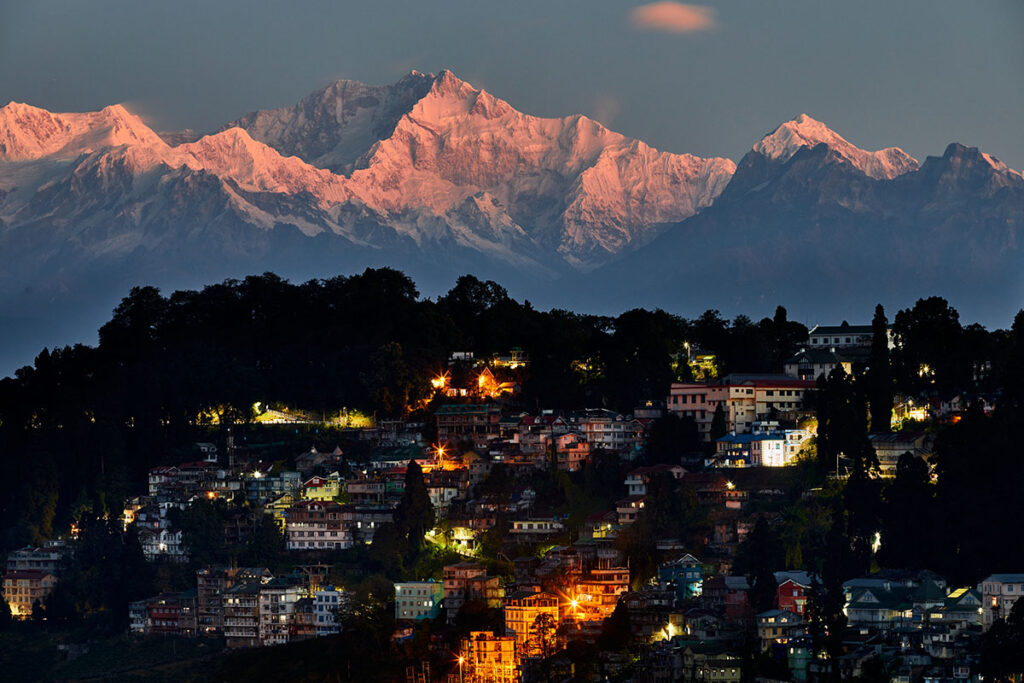
Darjeeling: The Queen of the Hills
In February 1829 the British Governor-General of India, Lord William Bentinck, dispatched two officers, Captain George Lloyd and J. W. Grant, to help resolve a spat between Nepal and the Kingdom of Sikkim. The latter, a thumb-shaped region sandwiched between Bhutan and Nepal to the east and west respectively, with Tibet to the north. They were also briefed to assess the suitability of the area for a sanatorium.
Squabbles between the two Himalayan kingdoms were commonplace. Since the late eighteenth century, the Nepalese had been whittling away at Sikkim’s borders. When an attempt to take the rest of Sikkim was launched the British East India Company intervened. A treaty was signed in 1817 and more than 10,000 square kilometres of territory were returned to Sikkim. That didn’t stop the fighting but a clause in the treaty did state that in case of disputes the British were bound to arbitrate.
It was to attend to one such dispute that Lloyd and Grant found themselves at a place known as Dorje Ling. The name means the place where Indra’s septre fell. There had been a monastery here since the middle of the 18th century when the area was home to only a hundred or so people of the Lepcha tribe. The two officers spent six days there and liked what they saw.
Twelve months later a surveyor was sent to the area. His report not only agreed that the area was a splendid spot for a sanitarium, but it was also an excellent vantage point from which to keep watch on Nepal and Bhutan.
Requests to lease some land from the rulers of Sikkim were met with reluctance at first but after another border dispute in 1834, they relented. A year later a lease was signed for a 358.5 square kilometre tract. The Queen of the Hills, as Darjeeling is affectionately known, was born.
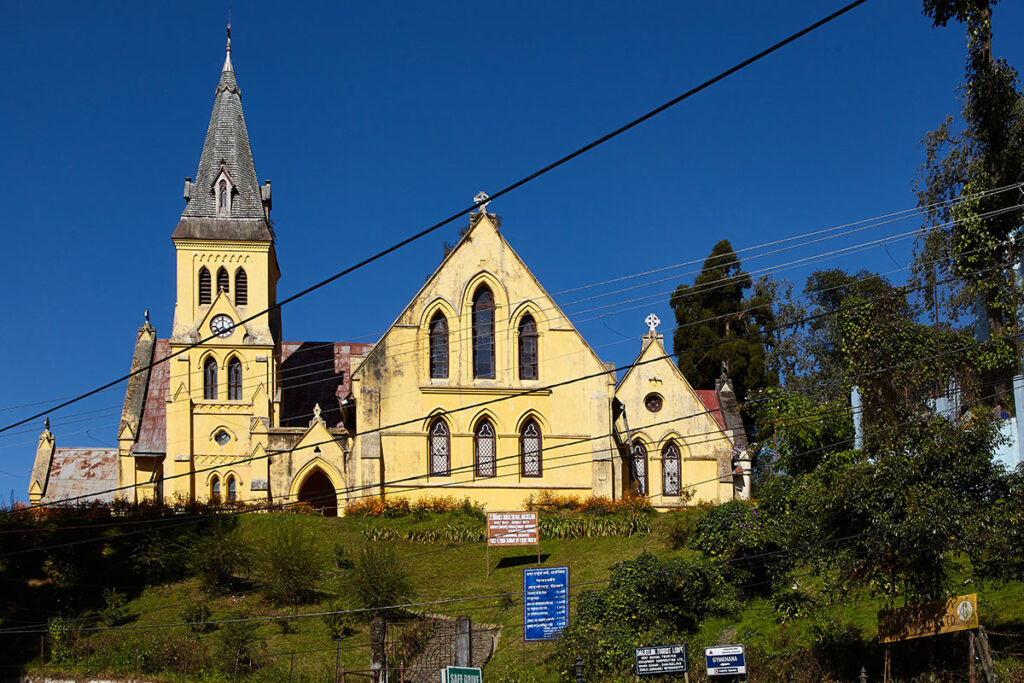
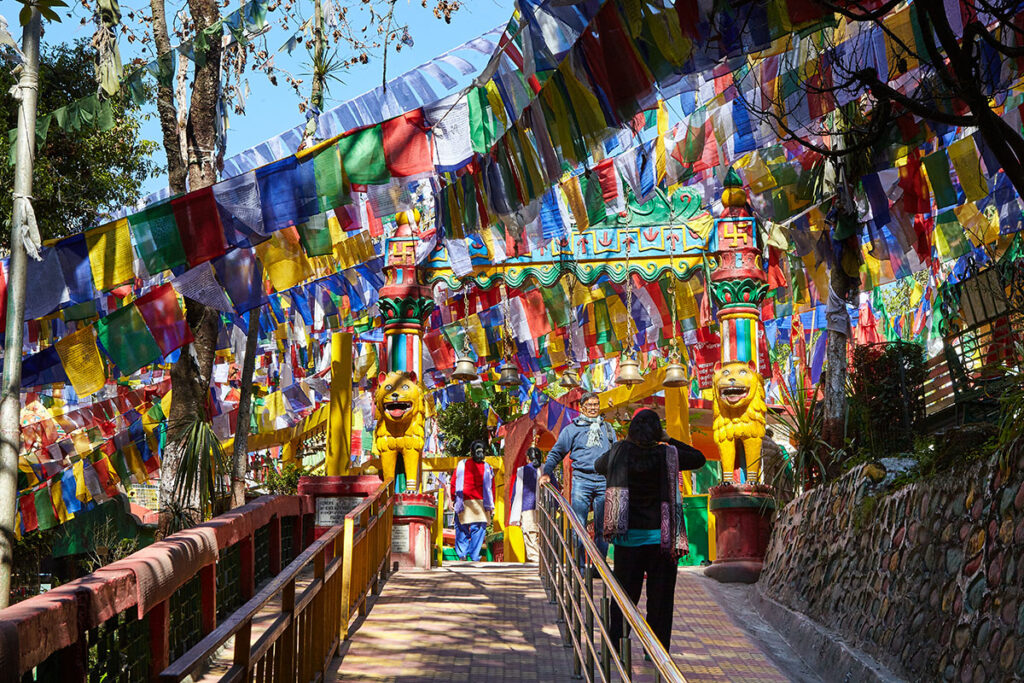
St Andrews Church (left) and posing for a portrait at Mahakal Temple
Getting familiar
Whether by train or jeep, most visitors arrive along Hill Cart Road. But whereas the railway ends at the station the road continues. Shortly after the station is a roundabout. Hill Cart Road branches off to the left and continues to Chowk Bazar through the town’s traffic-choked commercial hub. To the right, Ladenla Road winds its way uphill. Along the way is a curious neo-gothic-looking structure. Like many buildings in Darjeeling, there are two ground floors. The lower is home to a transport company and a shop selling colourful, locally made, fabrics and clothing. The main entrance is just around the corner but the gates are closed and the upper part of the building appears deserted. Signs on the rusted gates suggest councilors and, the Mayor’s offices were once there.
The old Post Office which was built in 1921 is now a UNESCO heritage building, can be seen a little further up, past Rink Mall. Beyond this are the bright white columns of the State Bank of India and at the very top of the road the stern but impressive-looking town hall and clock tower which was also built in 1921.
Here Ladenla merges with Gandhi, Nehru, and Robertson Roads though figuring out which is which takes a little practice since none of them are well marked. A key landmark is Keventors, a famous old restaurant established in 1911, whose rooftop is an excellent place to enjoy a full English breakfast and enjoy the sweeping panorama of Mt Kanchenjunga and the eastern Himalayas. Another famous eatery here is the tiny but immensely popular Kunga’s Tibetan Restaurant.
Keeping Keventors to your left, a pedestrian-only road lined with shops selling tea and and local arts leads up, past Glenary’s Tea shop and Restaurant, to Chowrasta where it meets Nehru Road and opens onto a large comparatively flat area just below Observatory Hill. There is a footpath that runs around the hill which affords excellent views of the Kanchenjunga and its surroundings.
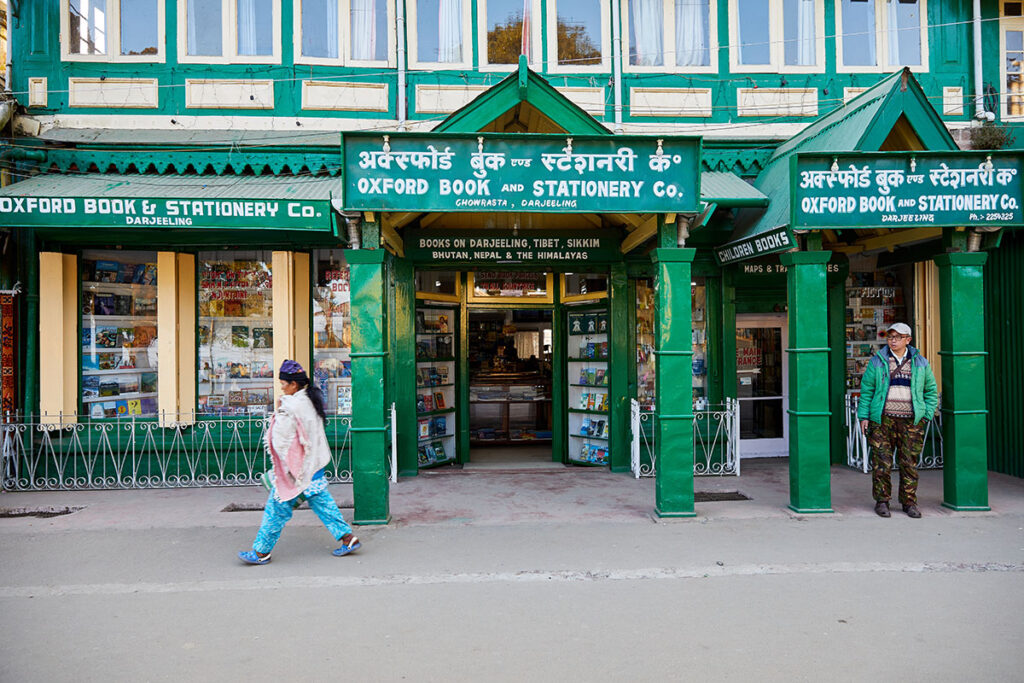
Oxford Book and Stationary (above) and Habeeb Mullick and Son (below left) in the Chow Rasta. Hill Cart Road continues to Chowk Bazar and the markets (below right)
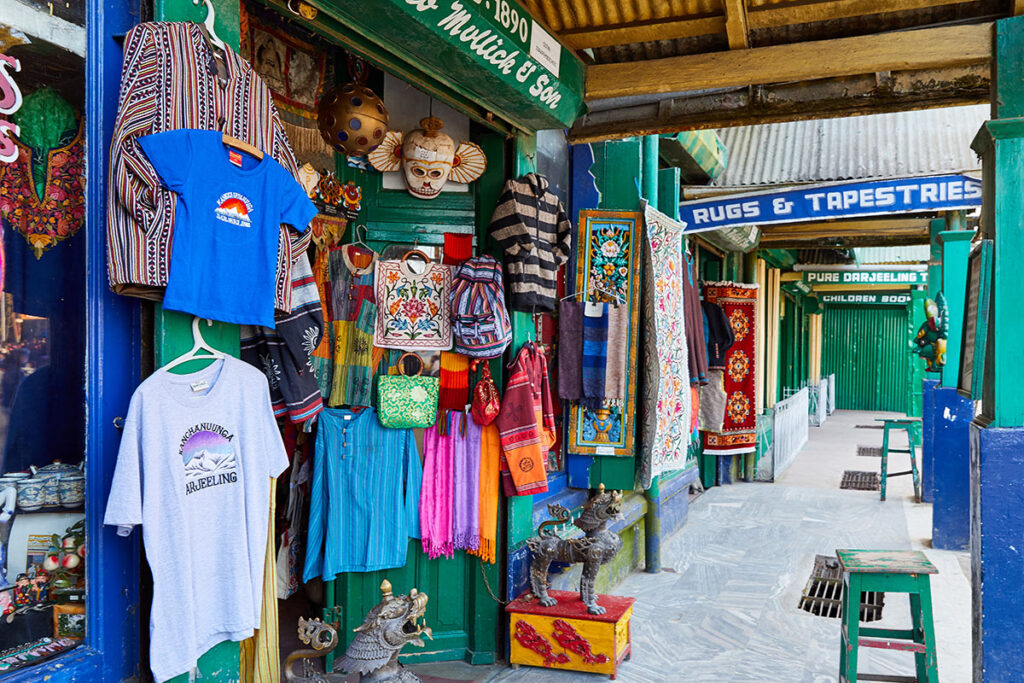
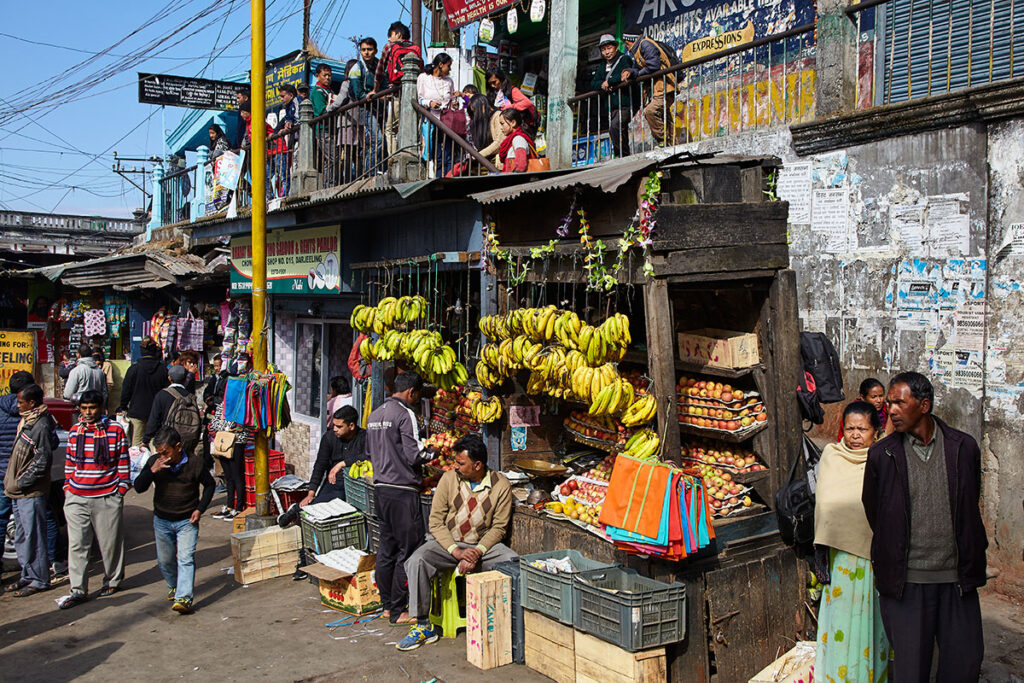
On top of the hill is Mahakal Temple with Tibetan prayer flags fluttering in the breeze, the occasional boom of the bell, and a handful of monkeys. The temple is where the original Dorjeling Monastery was built back in 1765 but that was destroyed by an invading Gorka army in 1815. The Monastery has since relocated downhill to Bhutia Basti.
The Chowrasta itself is a popular place to hang out. There are shops along one side including the delightful Oxford Bookshop which occupies the ground floor of a typical hill station-style house with the Chalet Hotel occupying the upper floor. Next door is Habeeb Mullick and Son who sell Tibetan arts and crafts. Opposite there are park benches where people meet and enjoy the fresh air and in between where dogs find sunny spots on the ground to stretch out and sleep.
From the far side of Chowrasta just to the right of the statue of Nepali poet Bhanubhakta Acharya there is a path called Mall Road which runs around Observatory Hill and offers spectacular views of the mountains beyond. Following the path full circuit will bring you back, past St Andrews Church, to Gandhi Road. Another path, hidden behind a row of benches opposite the bookstore, affords a delightful stroll through tiny, colourful villages down the hillside to Lebong.
Pick up a jeep going back along the road to Darjeeling past a huddle of roadside stalls selling teas and Tenzing Rock, where rookie climbers hone their skills. Shortly before arriving back in Darjeeling, you will pass the ornate St Joseph’s school. The school, which looks like it was transplanted from Oxford or Cambridge, was founded in 1888 and moved to its current location four years later.
The Himalayan Mountaineering Institute
The Himalayan Mountaineering Institute and the Padmaja Naidu Himalayan Zoo share premises and a small entrance fee. The institute was founded in 1954 to commemorate the first ascent of Mt Everest by Sherpa Tenzing Norgay, the year before. The museum was added in 1957 to promote education on mountain environments and preserve works of Himalayan art and culture. There are three main exhibitions, Mountaineering history, a chronology of Mt Everest, and a panorama of Himalayan life.
The institute also offers a range of adventure courses for climbers from basic to advanced, though even the most basic courses demand a good level of fitness.
I have to say I am not a fan of zoos. I was, however, smitten by both the snow leopard and the red panda though there was still an underlying urge to break their cages open and set them free. Of course that would not do any of us any good so I bit my lip and continued on my way.
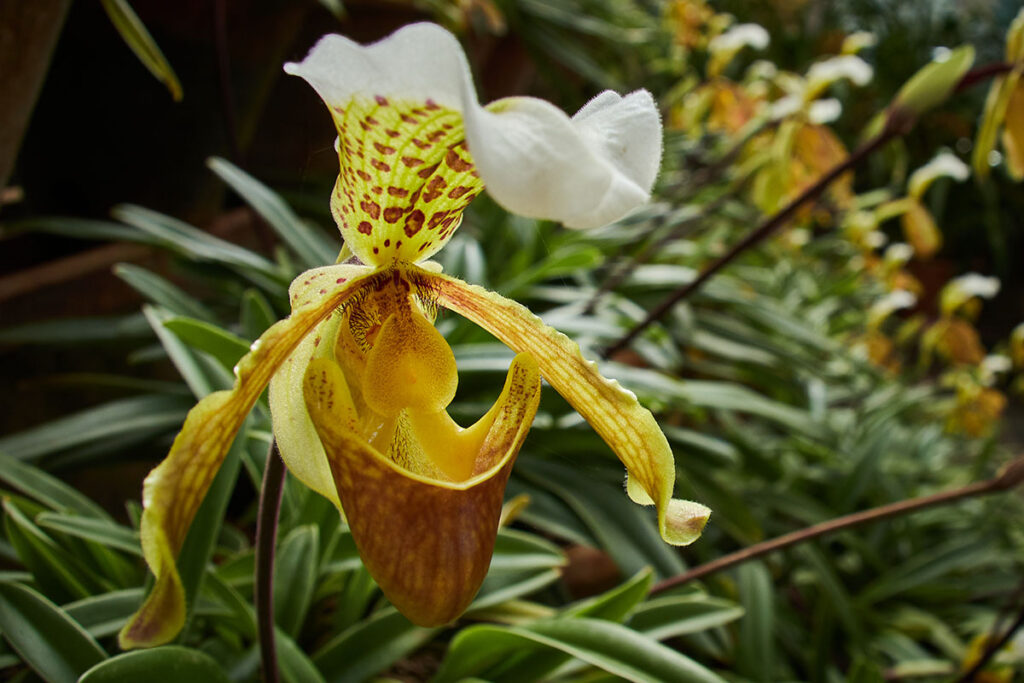
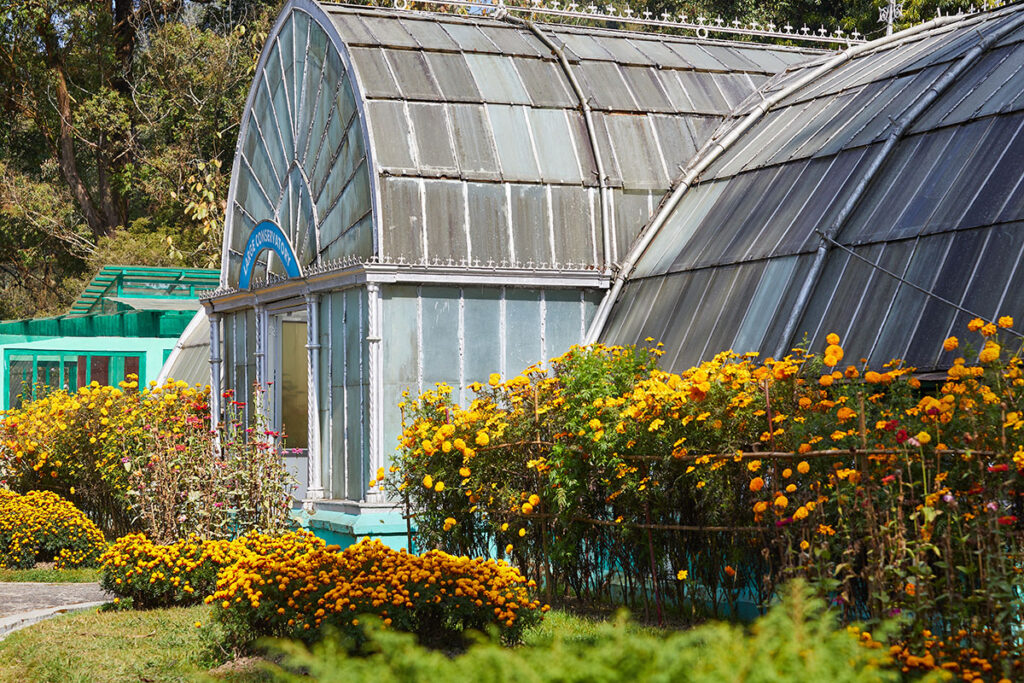
Lloyd’s Botanical Garden is home to around 2,500 species of orchids, though not all are in bloom at the same time
Lloyd’s Botanical Garden
The gardens were established in 1878 as an annex to the Calcutta Botanical Garden. It stands on 40 acres of land donated by William Lloyd, a Darjeeling resident resident at that time. They are an oasis of calm away from the often chaotic traffic of the town. The collection contains a vast selection of flora including wild geranium, rhododendron, arum lilies, numerous species of bamboo, oak, and magnolia, and an orchid house that is home to around 2,500 varieties including 50 which are rare. Not all of them are on display at any one time but there are enough blooms to keep most occupied for a morning
Ghum
The Toy Train offers steam and diesel joy rides between Darjeeling and Ghum stopping briefly at the Batasia Loop where there is a monument to the soldiers that fell during the conflicts that followed Indian Independence in 1947. Ghum, at 2,257 metres is the highest point on the line and there is an interesting railway museum next to the station.
There are also several monasteries near Ghum, at least two of them are well worth a visit. The biggest is the Druk Sangag Choling, or Dali Gompa for short. It was built in 1971 in a classic Tibetan style. It stands just to the north of Ghum and the Batasia monument, with Hill Cart Road and the railway running alongside. The monastery is the headquarters of the Kargyupa Sect with more than 200 monks both young and old in residence. The complex houses a school and a large library of books on books on Buddhism and philosophy but the most atmospheric part is a room with about half-a-dozen two-metre-high prayer wheels. The wheels are spun using a foot pedal while the devotees softly chant “Om mani padme -hum”

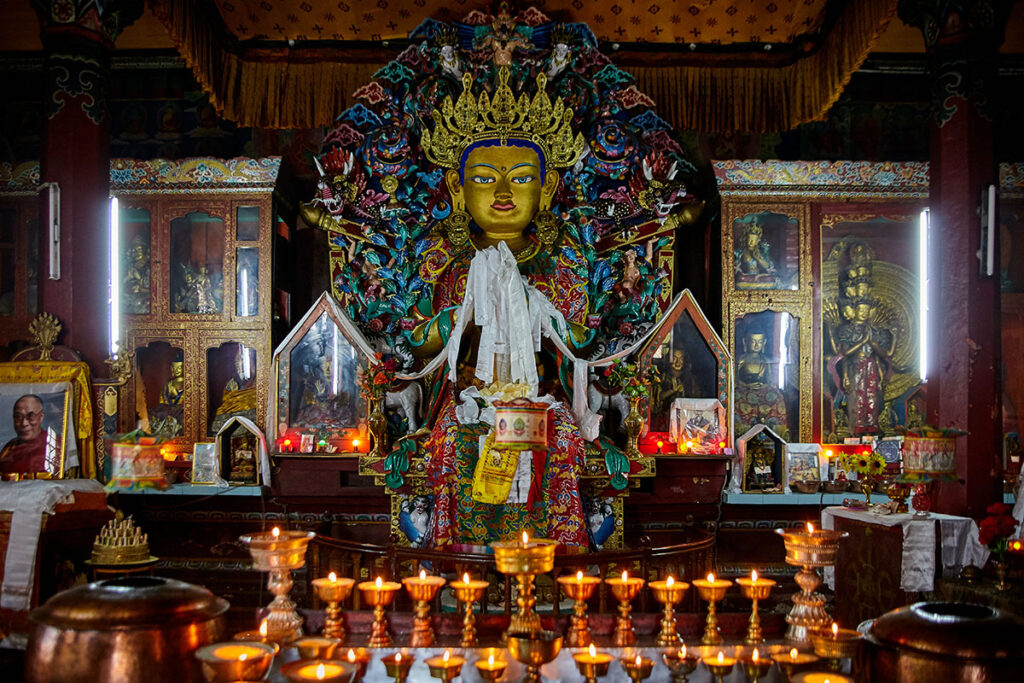
Yiga Choeling Monastery at Ghum (above). looking over the parapet at Druk Sangag Choeling Monastery (below)
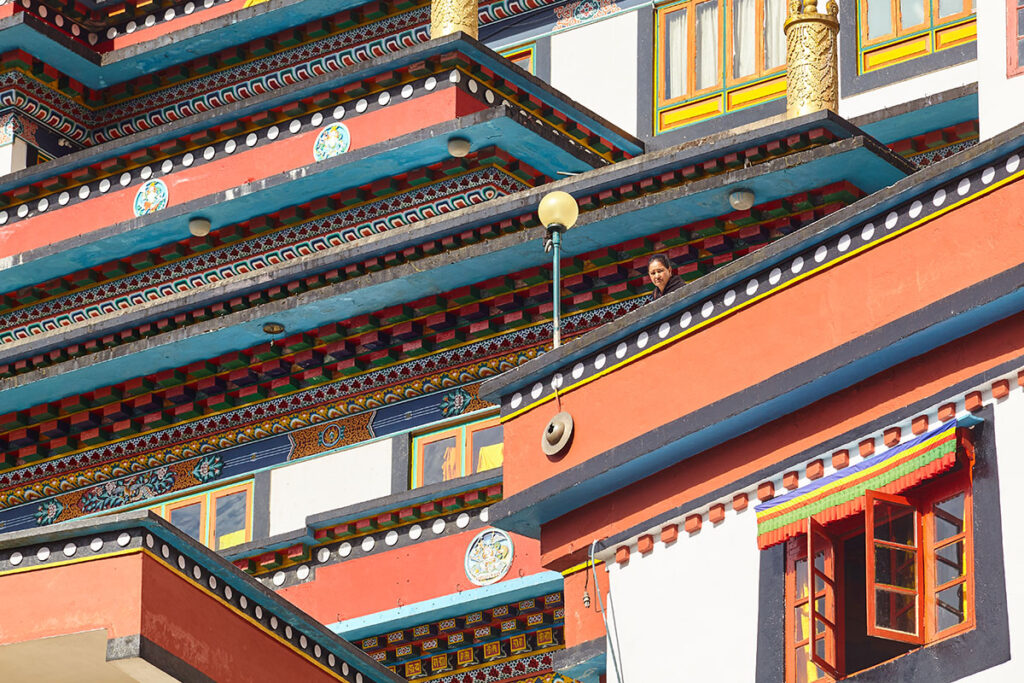
The Yiga Choeling or Old Ghum Monastery is about 800 metres west of Ghum station along Ghum Monastery Road. It belongs to the Gelukpa or the Yellow Hat sect of Buddhism. The monastery was established by Mongolian monk and astrologer Sokpo Sherab Gyatso in 1850. He remained its head until 1905. The main feature is a 4.6 metre-high statue of the Maitreya Buddha which was commissioned by Lama Domo Geshe Rinpoche who had succeeded Sherab Gyatso in 1909.
Tiger Hill
A hugely popular spot for mountain viewing, especially early morning when the rising sun paints the mountain tops with glorious pinks and golds. The hill features a purpose-built viewing platform within the Sinchel Wildlife Sanctuary. It is about 3.5 kilometres southeast of Ghum, or about 12 kilometres from Darjeeling.
Almost all hotels will be able to organise a jeep to get you there before sunrise. The centrepiece of the panorama is Mt Kanchenjunga, the world’s third-highest mountain clocking in at 8,586 metres above sea level. Apparently, even Everest can be seen on a clear day but because it is about 180 kilometres away its majesty is considerably diminished … and I am still not convinced I even saw it.
Walking back to Ghum through the wildlife sanctuary seemed, at first, like a pleasant way to spend the rest of the morning. But then I realised that, after all the other jeeps had gone, a lone hiker would be an easy breakfast for a hungry leopard, so I gave up on the idea.
Hotel suggestions
Windamere Hotel
Central Gleneagles Heritage Resort
Mayfair Hill Resort
Related: Afternoon tea at Glenary’s
Related: Darjeeling Himalayan Railway: The little blue train